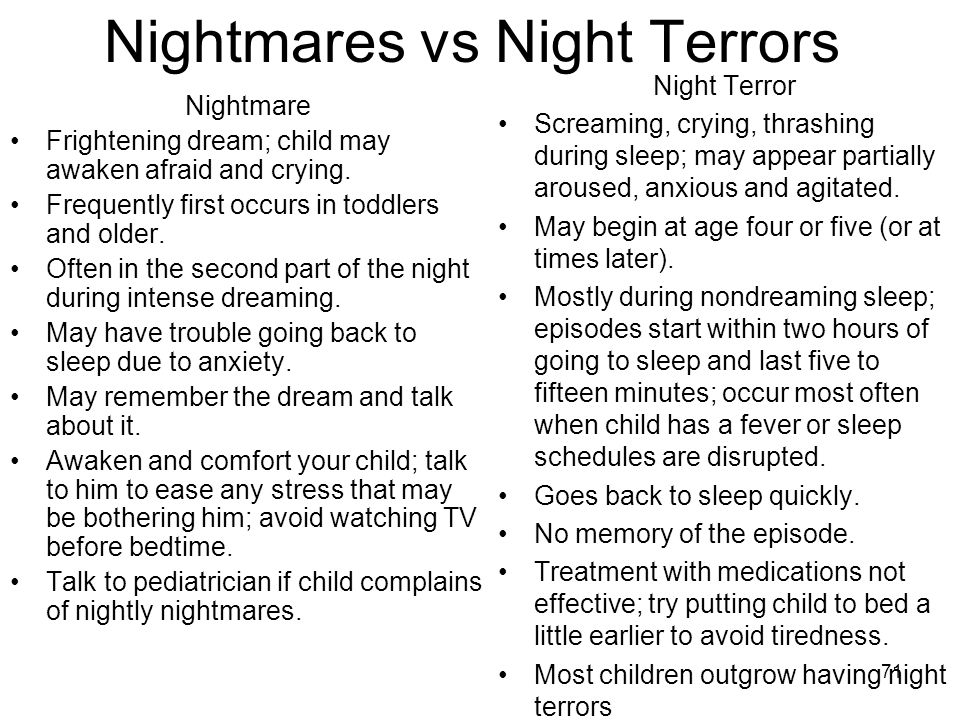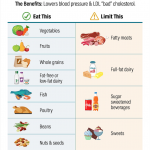Do you frequently wake up from a nightmare feeling traumatized? Do you find it hard to sleep through the night experiencing disturbing, recurring dreams? If you can relate to this situation, you’re probably suffering from a nightmare.[1]

Wait, aren’t nightmares for children? You think so? According to statistics, more than 2-3% of adults are plagued by nightmares. Every one out every two adults suffers from nightmares, occasionally.
Though nightmares are not kind of a serious condition, if it’s taking a toll on your life, then you must acknowledge the situation immediately.[2]
Fasten your seatbelts, and let’s get into an in-depth study about nightmares.
What are nightmares?
Nightmares are physically authentic, unnerving dreams that awaken you up from a deep sleep. They are terrifying and can set your heart thudding out of fear.[3]
Nightmares mostly occur during rapid eye movement (REM) sleep. This is the time of sleep when most of the dreaming occurs. As the night progresses, the periods of REM sleep also progresses. Most commonly, people experience nightmares early in the early mornings.[4]
Every individual is unique, and the scenarios of nightmares are also unique and differ from person to person. However, there are some frequent nightmares that people experience- an inability to run fast or to skip from danger or fear of falling from a high building and more terrifying situations. People who went through traumatic experiences like accidents or any attacks also experience nightmares where the incident reoccurs in dreams.[5]
It is a disturbing dream that is usually related to negative feelings like anxiety or fear, stress- emotions that live deep down inside human beings.
Though both nightmares and night terrors make people wake up in shock from fear yet, they are different in many ways.
Symptoms of nightmares in adults
Nightmares generally happen in the second half of the night. They occur rarely or more frequently or even several times of the night. The episodes of nightmares are brief, making it hard to go off to sleep.[6]
A nightmare involves the following features:
- You will feel that what you are dreaming is actually real.
- Worse, nightmares can be very frightening.
- Many dream about threats or safety of survival – which can be anything from falling from a roof or being killed by someone.
- You feel anxious, scared, angry, disgusted, and sad because of your dreams.
- Your heart starts pounding at a high rate, and you feel sweaty while in bed.
- You find it difficult to go back to sleep because of the distress and fear of another nightmare.[7]
Though nightmares are not dangerous, it can be challenging to handle when you experience:
- Frequent or regular occurrences.
- Distress during the day, including anxiety and constant fear of experiencing another nightmare during bedtime.
- Sleepiness and anxiousness during the day-night and low energy.
- Problems in being active in school or work or social situations.
- Fear of the dark or behavioral issues related to bedtime.

What are the reasons for nightmares in adults?
Nightmares happen randomly, and there are many factors and underlying disorders that play a significant role that affects your nightmares.[8]
Here we’ve mentioned a few of them:
Stress and anxiety: Often, daily stresses in life cause life, home, schooled triggers nightmares. Another primary reason is the death or moving away from a loved one can also cause nightmares. The risk of nightmares is also heightened by anxiety.[9]
Trauma: Any traumatic experience like an accident, injury, sexual or physical abuse, or other events can trigger nightmares. People suffering from PTSD (post-traumatic disorder) often suffer from nightmares.[10]
Sleep deprivation: If you don’t sleep on time or experience changes in your sleep schedule, you may suffer from more nightmares. Insomnia is another cause associated with nightmares.[11]
Substance abuse: Regularly drinking alcohol and recreational drugs may be another reason. You may also experience more nightmares if you are experiencing withdrawal symptoms.
Medications: Drugs such as anti- antidepressants, BP medications, drugs for Parkinson’s disease, beta-blockers, or medicines used to stop smoking can aggravate nightmares.
Other disorders: Any mental health disorder or depression is linked to nightmares. But added medical conditions, such as heart diseases or cancer, are associated with experiencing nightmares.
Scary books and movies: Some people are intrigued by and reading scary books, and watching scary movies, especially before bed, can also trigger nightmares.
How to handle Nightmares in adults?
Though nightmares are not necessarily dangerous, if it’s causing distress, anxiety, disturbance, and taking a toll on your life, you must seek professional help.[12]
The treatment depends on the cause of nightmares. It includes:
- Medical treatment: If your nightmares are related to any underlying medical condition, the treatment should aim towards the underlying cause.
- Medication: Though medications are not really useful for treating nightmares, they are recommended to treat severe PTSD nightmares.[13]
- Stress and anxiety treatment: If your nightmares are related to anxiety or stress, your medical practitioner would suggest some stress reduction techniques, therapy, or counseling with mental health professionals.
- Imagery rehearsal therapy: This treatment is used for people who have fallen victim to Post-Traumatic Stress Syndrome. This treatment works by changing the remembered nightmare’s ending while awake to no longer be threatened or haunted during sleep. You can rehearse the new endings in your mind until the subconscious mind accepts it as a reality. This approach will lessen the recurrence of nightmares.[14]
How to differentiate between Night Terrors and Nightmares?
As mentioned above, night terrors and nightmares may seem similar, but yet they are different. We’ve laid down a few distinctions between nightmares and night terrors.[15]
Nightmares are vivid, scary dreams that usually awaken a person immediately. These dreams can easily be recalled. Whereas night terrors are hard to wake up from, and the person feels exceptionally agitated such as screaming, whipping, or even sleepwalking. Despite these physical reactions, a person cannot leave the bed and sleep through it.
Another point of distinction between nightmares and night terrors happens during the stages of sleep.[16]
Generally, there are four stages of sleep. The first two stages are the light stage, then follows three and four where a person is in a deeper sleep, and then roughly after 90 minutes, the person enters into the fifth stage, which is the rapid eye movement (REM) sleep.[17]
Night terrors happen when you are in light sleep or (non-REM sleep), while nightmares happen when you are in a deep sleep (REM sleep).[18]
Lifestyle and home remedies to treat nightmares
Here are home remedies that can help you and your child (in case) to handle nightmares.
- Follow a relaxing routine before sleep.
- Talk about the dream
- Rewrite the ending
- Put stress in its place
- Provide comfort measures
- Use a night light
Final thoughts
Nightmares can be really disturbing when left untreated. Though it is nothing to worry about, neither is it something that you can handle easily, if it occurs regularly. If you find it hard to deal with, talk to a medical practitioner,
[1] https://www.ncbi.nlm.nih.gov/pmc/articles/PMC2806673/
[2] Diagnostic and Coding Manual. 2. American Academy of Sleep Medicine; 2005. The International Classification of Sleep Disorders. (ICSD-2) [Google Scholar]
[3] Zadra A, Donderi DC. Affective content and intensity of nightmares and bad dreams. Sleep. 2003;26:A93–A94. [Google Scholar]
[4] Halliday G. Direct alteration of a traumatic nightmare. Percept Mot Skills. 1982 Apr;54(2):413–414. [PubMed] [Google Scholar]
[5] https://pubmed.ncbi.nlm.nih.gov/20161576/
[6] Rothbaum BO, Mellman TA. Dreams and exposure therapy in PTSD. J Trauma Stress. 2001 Jul;14(3):481–490. [PubMed] [Google Scholar]
[7] https://www.ncbi.nlm.nih.gov/pmc/articles/PMC2919672/
[8] Zadra A, Pilon M, Donderi DC. Variety and intensity of emotions in nightmares and bad dreams. J Nerv Ment Dis. 2006 Apr;194(4):249–254. [PubMed] [Google Scholar]
[9] Belicki K, Chambers E, Ogilvie RD. Sleep quality and nightmares. Sleep Research. 1997;26:637. [Google Scholar]
[10] https://www.ncbi.nlm.nih.gov/pmc/articles/PMC5581821/
[11] Levin R, Fireman G. Nightmare prevalence, nightmare distress, and self-reported psychological disturbance. Sleep. 2002 Mar 15;25(2):205–212. [PubMed] [Google Scholar]
[12] https://www.ncbi.nlm.nih.gov/pmc/articles/PMC6263296/
[13] Spoormaker VI, Schredl M, van den Bout J. Nightmares: from anxiety symptom to sleep disorder. Sleep Med Rev. 2006 Feb;10(1):19–31. [PubMed] [Google Scholar]
[14] https://www.ncbi.nlm.nih.gov/pmc/articles/PMC5991964/
[15] Mason TBA, Pack AI. Sleep Terrors in Childhood. The Journal of Pediatrics. 2005;147(3):388–392. [PubMed] [Google Scholar]
[16] https://www.ncbi.nlm.nih.gov/pmc/articles/PMC2880244/
[17] Belicki D, Belicki K. Nightmares in a university population. Sleep Research. 1982;11:116. [Google Scholar]

